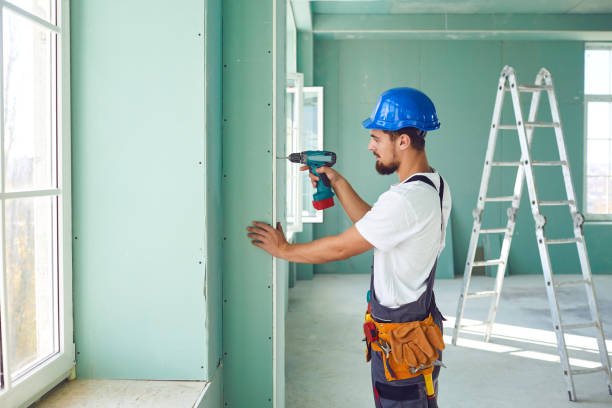The Basics of Drywall Installation

During a drywall installation, you must measure the size of the opening carefully, and then cut the corresponding sized sheet of drywall. Then, align the drywall against the opening, and fasten it using 1-1/4-inch screws. Drive the screws evenly from the middle of the panel to the outside, spacing them at least 16 inches apart. After the drywall is in place, the next step is to install the metal corner bead and nail it to the ceiling.
The degree of finish is another important factor, as it adds to the overall cost. The degree of finish determines how much drywall will cost, and you can choose between spray or hand-applied textures. The cost of drywall installation varies depending on the extent of the finishing, the type of material and the amount of labor that will be required. You must also consider the cost of insulation. A standard batt insulation costs about $0.10 per square foot, while other types may cost up to $30 a square foot.
When the commercial drywall contractors install drywall and they make sure to mark the framing areas first. Marking a line on the drywall sheet with a pencil helps to avoid making a mistake later. Then, use a lift to secure the drywall sheet, placing it as tightly as possible against the ceiling. After securing it with drywall screws, score the edges with a drywall square. The edges of the drywall sheet should be flush against the ceiling, but not so tight that the paper breaks.
When choosing a drywall contractor, ask about their certifications. Generally, a drywall contractor must be a member of the Association of Wall and Ceiling Industry (AWCI) and be licensed, bonded, and insured. A quality drywall installation company will have a contract detailing all steps in the process. In case you choose paperless drywall, make sure that the contractor is certified and insured, as well as insured. You should also ask about their background and experience in the drywall industry before hiring them.
Once the drywall is up, the next step is preparing the walls for mud. Mud needs to be peanut butter-like, with no lumps or bubbles. This is best done with a metal spackle knife. Use drywall tape to cover exposed seams and electrical outlets. Be sure to use drywall tape that fits over the seam lines. Then, wring it out thoroughly to remove any excess moisture. And last but not least, when installing drywall, remember to make sure you follow all of the instructions carefully and have a clear understanding of the process.
If the job goes well, you're ready to start painting. Once you've finished painting the walls, you can prime and seal them. You can then apply two coats of interior paint to complete the job. Lastly, if you have some extra compound leftover, you can use a paint roller to cover them with a skim coat. This step can be time consuming, but the result is worth it. In addition to drywall, it can also add a beautiful touch to a room.
